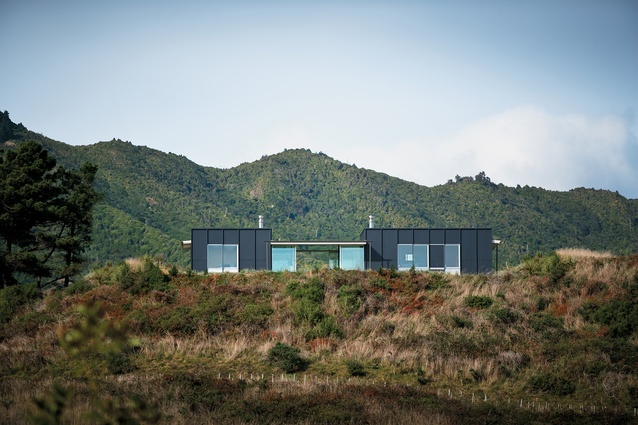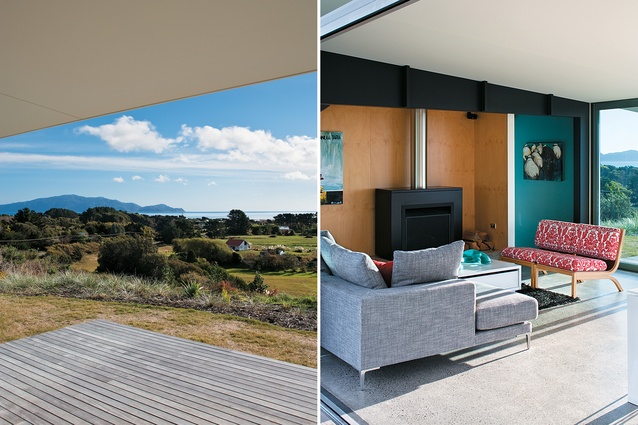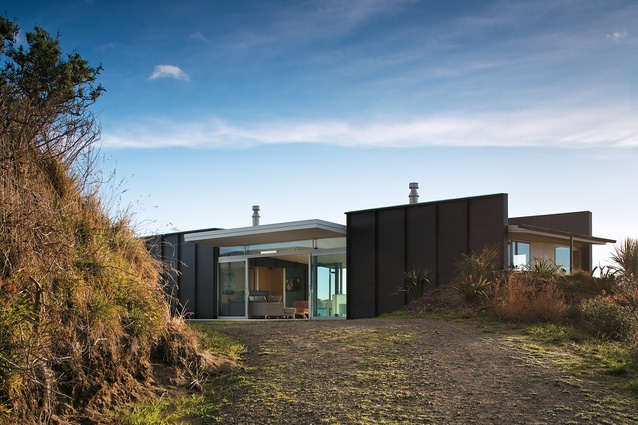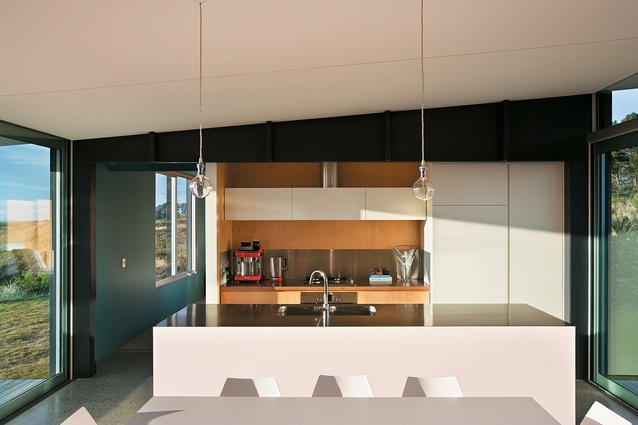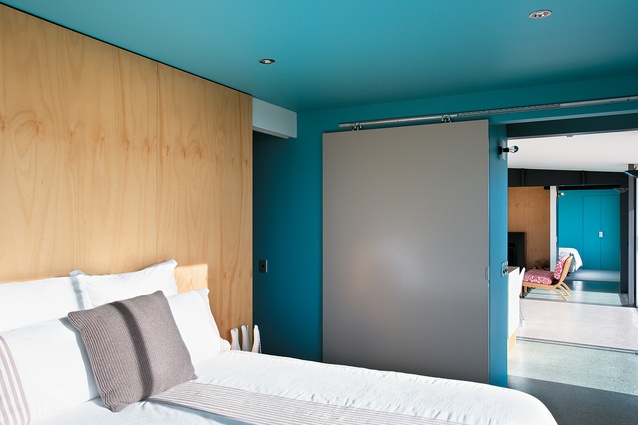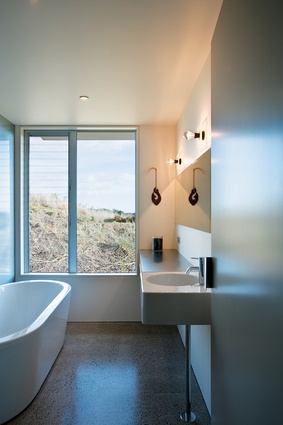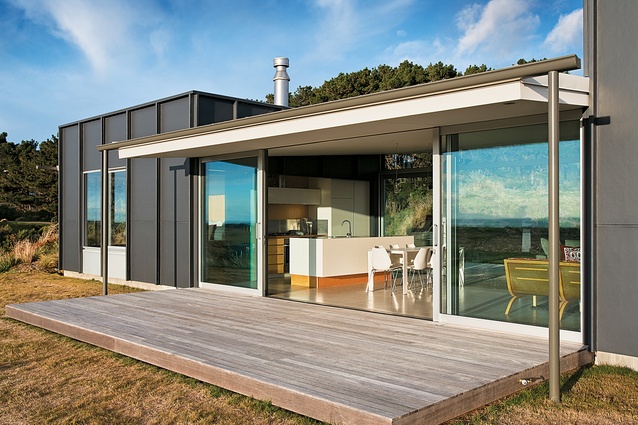Houses Revisited: In Parsonson country
One Wellington practice has been making a name fore itself in Kapiti Coast beach houses for over a decade. This 2009 house is a shining example.
The Kapiti Coast, Wellington’s beach-house hinterland, is becoming Parsonson country. Gerald Parsonson’s practice has designed half a dozen holiday homes along the 30-kilometre stretch of duneland that looks west to Kapiti Island. And, you’d have to say, the man has got it nailed. If you’re fortunate enough to be in the market for a certain type of beach house – clever but uncomplicated in plan, simple but expressive in materials, inventive but modest in detail, cognisant of tradition but completely practical, sufficient but not suburban – then you just can’t look past Parsonson Architects.
The practice continues to adhere to the exacting standards of its director, and to benefit not just from his design talent but his hands-on approach to design implementation. Gerald Parsonson really does outstanding work. You walk into one of his houses with a confident anticipation of superb competence. If any client happened to be dissatisfied with a Parsonson house, the fault could only lie deep within. The building would be blameless.
This holiday house, perched on a flat plot in a new dunetop subdivision set back from Peka Peka beach, is a simple-seeming long box. Two boxes, rather, joined by a transparent mid-section. The design concept is beguilingly straightforward, a response, Gerald Parsonson says, to a brief that was appropriately brief. (Why on earth should a beach house be complex?).
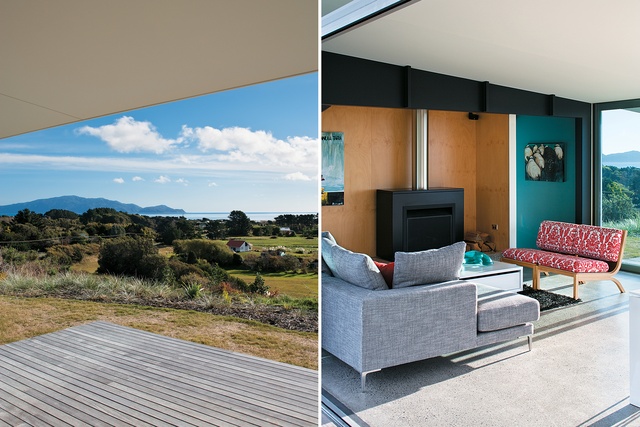
The clients, Parsonson says, “wanted a really simple, relaxed, low-cost weekender”, so their architect replied with a logical rejoinder – “something with four corners”. A rectangle, in a word. The budget – this building came in at around two-and-a-half thousand dollars per square metre, in part because an honest builder took responsibility for a tender that proved a little tight – didn’t allow for a flat roof, so Parsonson designed “three little floating roofs”. The building sits atop its dune on a lightweight ‘raft’ foundation incorporating “large chunks of polystyrene”.
The house, for followers of the modern pavilion, is familiar in form: two solid bedroom/bathroom ends frame a glazed kitchen/dining/living middle. At the north end is the main bedroom with its ensuite bathroom; at the south end is the guest quarters. It is in this secondary bedroom ‘wing’ – the ply that wraps around the bedroom ends encourages a reading of them as discrete cabins – that Parsonson’s planning dexterity is most apparent.
Somehow, into this guest ‘cabin’ the architect has fitted not only a bedroom, a bunkroom (typically, the bunks are custom-designed), a bathroom, toilet, laundry and storage, but also a little hallway that elbows its way around the interior. The small, kinked corridor is masterfully done: oh yeah, you think, this is the difference an architect can make. All at once, a long box gains some depth and a house that, in lesser hands, would be all and boringly about the view, takes on an interior life.
This little excursion into the interior is reminiscent of a similar journey Parsonson built into his own family’s beach house, further down the Kapiti Coast. As in that house, a richer colour is used inside the Peka Peka house to distinguish the more private areas. (The shade of green used on the walls is a mis-tint; serendipitously, the clients liked it anyway).

The house’s functions are differentiated on the exterior also, where black fibre-cement sheets, in modular rhythm – the architects specified standard sheet-sizes for economy of construction – clad the bedroom ends. It’s hardly heavyweight construction, but compared to the glazed middle, the two end boxes read as solid structures.
Inside and outside, the detailing, as is to be expected in work by this practice, is well-considered and well-executed. Bespoke items – the bunks in the guest ‘box’, the light fittings on the interior, the uplights on the posts supporting the covers over the east- and west-facing terraces – testify to the holistic treatment Gerald Parsonson gives his buildings. The architect has even allowed himself “a slightly oddball” gesture: the guttering that pokes past the line of the house at either end of the house and extends past the line of the central roof section. Is Parsonson making a quiet point here? Just quietly asking the question, ‘Who says I’m too serious?’
This speculation isn’t idle. I’ve never met any architect – and like all professionals, architects can be a little begrudging of their peers – who has expressed anything but admiration for Gerald Parsonson’s ability, thoughtfulness, and technical mastery. But sometimes there’s a cautiously-offered caveat: perhaps his houses, especially his beach houses, are too resolved, too disciplined, too rational?
I’m not sure about the subtext of such criticism. Could it be that Parsonson is committing the cardinal architect’s sin of repressing his ego (or should that be, his id?) Or is there a suggestion that his beach boxes are a bit uptight? Perhaps the issue is that Parsonson does not indulge in overt and ostentatious demonstration. There are surprises in his houses, but they are small surprises; and there’s delight in the houses, but if you want ‘wow factor’ then you’d better look elsewhere (and if you find it, you’re welcome to it). Confronted with quibbles about Parsonson’s perfectionism, you just want to say, ‘Look, the man – and his architecture – has good manners.’ (A quality, of course, that’s bound to prompt a vulgarian reaction.)
The reservations about Parsonson’s buildings may well be mis-ascribed. He doesn’t design machines for living, but he certainly gives his clients strong, clear structures in which to live. How they live is up to them. Parsonson’s beach houses, it seems to me, could stand – and perhaps they even require – vivid occupation. Big colourful canvases, generous-sized tables, bright rugs – God help me, I’m sounding like an interior designer. What I mean is that the architect has already delivered the exquisite object; a good response might be to take that as a challenge, rather than a cue.
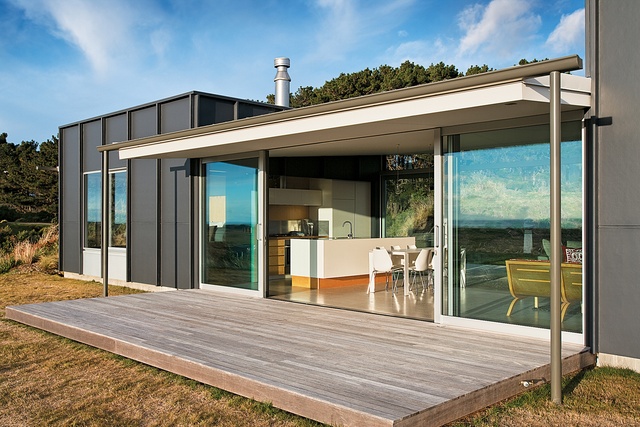
Talking about living in a Parsonson beach house – there does seem to one particular challenge in the Peka Peka house which might be generic rather than particular in nature. The long, skinny pavilion, especially if it is glazed, or may be opened up, on both longitudinal sides, can be present a functional dilemma.
In this house, the middle space between the kitchen and living area is a void; it reads, intentionally, as an outside space (especially if the sliders to east and west are both open – which, given, the house’s rather exposed site on a windy coast, might not happen too often). So: what is this space? Thoroughfare, or dining room? Do you stick your table here, as you would in an external courtyard, under the shade of a vine? You probably have to, but diners might feel like they’re stranded in no-man’s land. Well, this is a small concern – who has formal meals at the beach? Some things clients just have to sort out – no matter how able their architect.
Want to be the first to see Houses Revisited, received straight to your inbox? Click here to subscribe to the ArchitectureNow newsletter.

